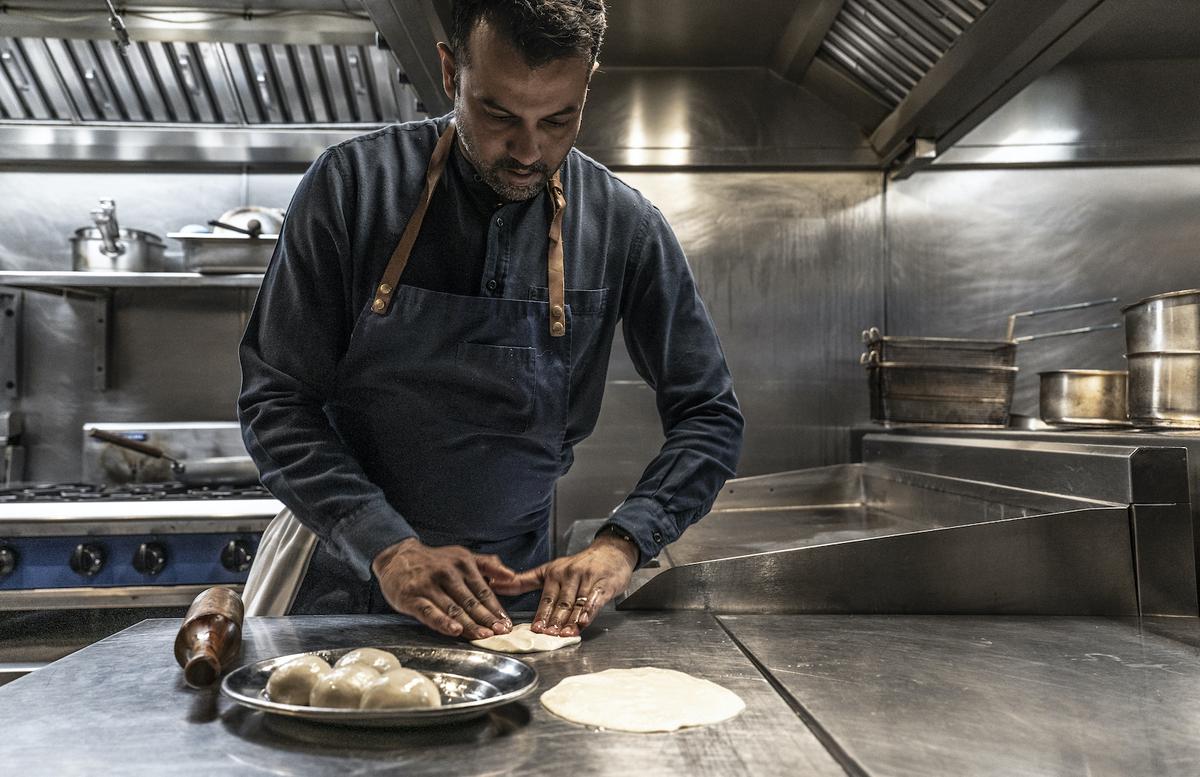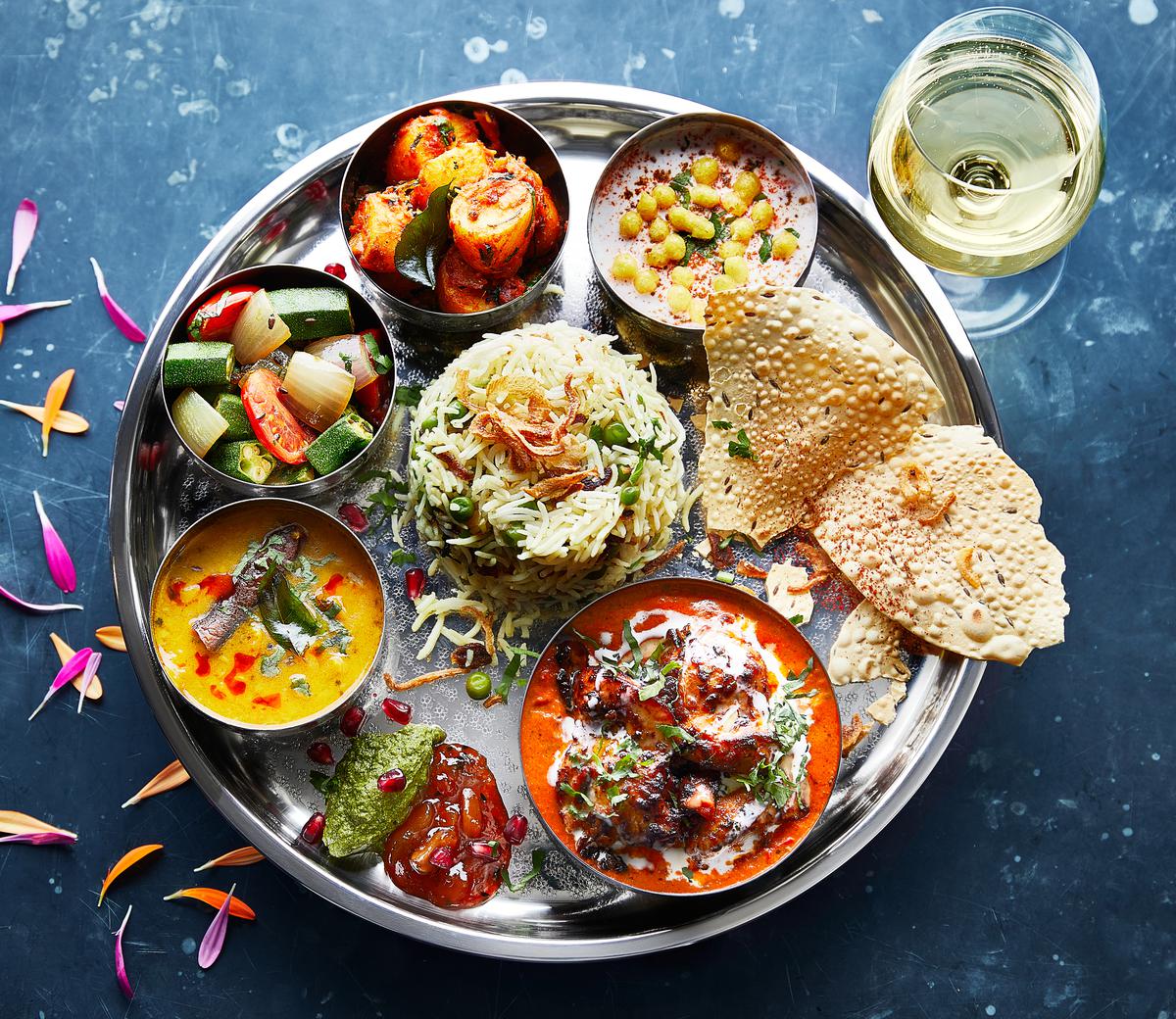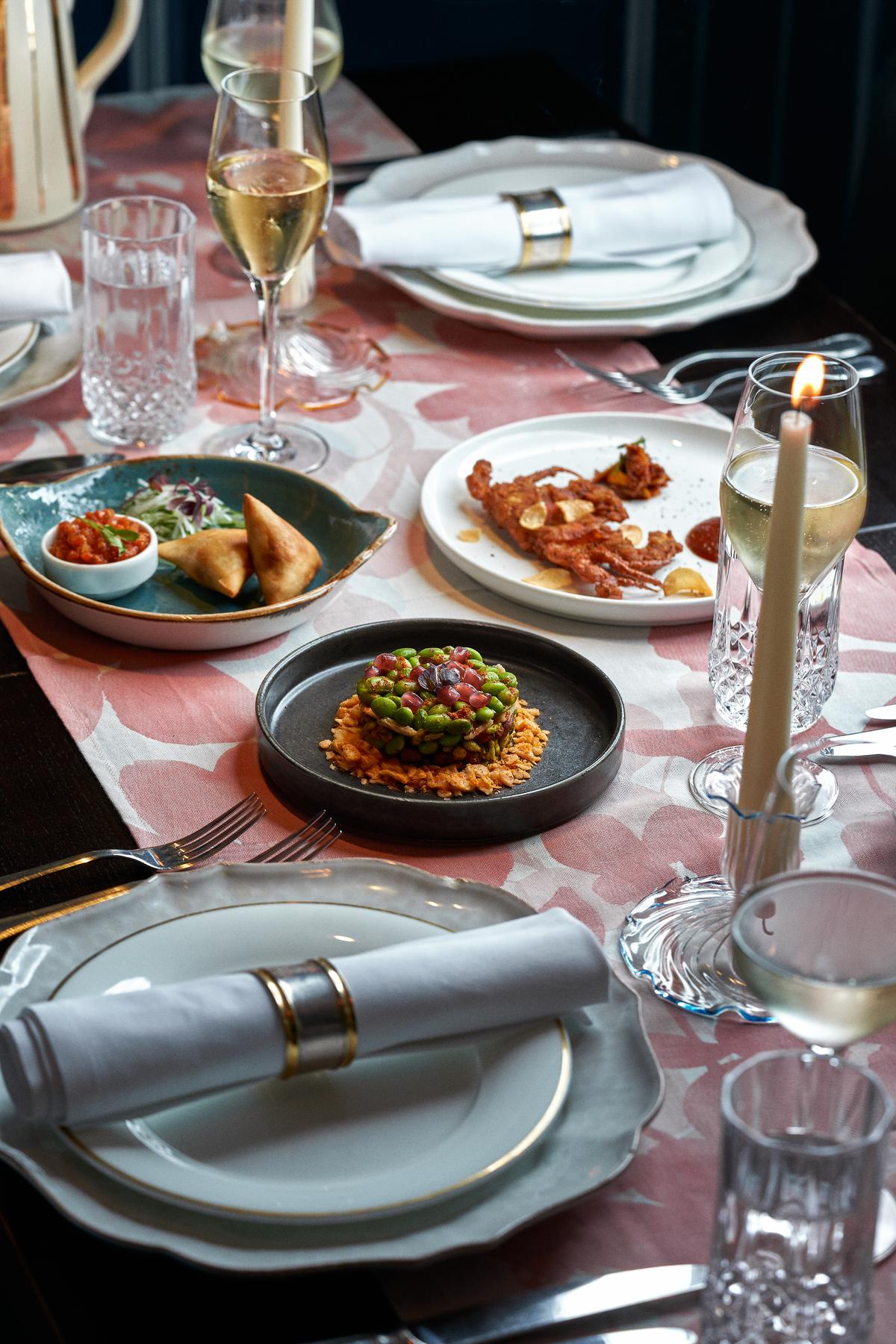Seventy years before this May’s coronation weekend, when Elizabeth II was crowned queen in 1953, the British empire was still yet to be fully dismantled. Curry and curry powder, the result of a colonial, European gaze on Indian food remained in vogue, and cultural appropriation was not yet a term in circulation.
For the late queen’s party therefore, the coronation chicken — a spin on the Mughlai creamy korma of India’s medieval past, a genre of meat dishes distinguished by their use of cream, saffron, and sweet and sour flavour profile from the use of dried fruit and almonds — could be savoured sans scrutiny: was this cold chicken with curry powder (a British invention, not Indian), and crème fraiche as much an act of appropriation as the much-discussed pocketing of the Kohinoor? In a Europe, where colonial legacies are being re-examined these days, Charles and Camilla have wisely steered clear of curry or Kohinoor for the coronation. Their “official coronation dish”, is a spinach-broad beans-cheddar quiche — aspiring to be egalitarian, stolidly English in its cheese and local veggies choice.
However, as the new monarch is crowned, it is tempting to look at the irony of how in a post-lockdown, post-Brexit country, imperial legacies are being replaced by retail, dependent on the erstwhile ‘natives’. For a long time now, London’s composition and earnings have been influenced heavily by tourists and expats — of which, rich Arabs, Russians, Chinese and lately Indians have formed a chunk. Ultra-high net-worth Indians, as realty reports will tell you, have been buying holiday homes and visibly investing in real estate, especially in the last few years, post-lockdown included.

A snapshot of Hoppers
| Photo Credit:
Special Arrangement
Oothappam and Old Monk pudding
This spring, Indian money seems more discernable than ever. The new Raffles, an elite 125-room hotel with multiple restaurants, is invested in by the Hinduja group and will open at the iconic Old War Office, where British Prime Minister Winston Churchill once sat. What could be more ironic? And while curry houses still abound, they are distinctly out of step. The Madras or the sweetish korma curries are no longer flag bearers of “Indian”, even for the masses. The 1990s-2000s style of “frenchified” Indian is gone too, exit the muted salmon tikkas of yore. Instead, chefs and restaurants are plating up dishes inspired by family recipes and street eats in stylish settings that invite conviviality.
Gunpowder Tower Bridge came up bang in the midst of the pandemic, a fancier sibling of the 2016 tiny neighbourhood eatery at Spitalfields, at the corner of Brick Lane. At Tower Bridge, the spanking new restaurant is expansive and popular with the corporate crowd that has been slowly returning, though many central London restaurants are still struggling to fill their lunches. But this new Gunpowder is always full. Its Chettinad pulled duck with ‘oothappams’ and Kashmiri lamb chops whose recipe belongs to the owners’ family not to mention Old Monk Rum pudding all pay obeisance to many different Indias. But despite the lack of a common theme, there is a certain ‘authenticity’ to the small plates. This is Indian food that gens X, Y and Z even in India could claim and eat.

A thali at Masala Zone
| Photo Credit:
Special Arrangement
At Oxford Street, Chourangi, which also came up in the midst of the pandemic and is co-owned by restaurateur Anjan Chatterjee and Akasa Air’s Aditya Ghosh, too is packed on a weekday. With its kosha lamb, seabass paturi, hing aloo dum, pickled hilsa and tender jackfruit dum biryani, it does not hold back on the poshto, mustard, or Bengaliness even if there is nothing overtly “ethnic” in its contemporary, clean décor. Restaurants like these offer a more nuanced experience than those red-lanterned or brass-Tanjored ones of the past where the look was ethnic but food anglicised. Instead, these new spaces are part of a regional wave of sophisticated, as well as fun, modern, and accessible Asian restaurants where young chefs and restaurateurs are trying to plate up what feels authentic to them.
Enter the heirloom recipe
Go on to social media and you find chefs talking not just about dishes but about their cultures too. “Chefs are going back to their roots and diners want to sample their cultures and be transported to other worlds via food,” observes Sharath Jeevan, OBE, a leadership expert who works with restaurateurs. Chef Sameer Taneja of Benares tells me how “awareness and understanding of spices have become stronger” in London with both chefs and diners. “I use khas ki jad (a Lucknowi spice) to smoke our proteins and also timur (a Himalayan spice similar to Sichuan pepper) in dishes…I don’t think my food is frenchified at all, I bet it is deeply rooted, inspired by the cultures and traditions of India,” he says.
Apart from regional Asian, Indian and Sri Lankan included, West African cuisines are also in vogue. “Swallow” (a smooth dough) foods like Tuwo Shinkafa (made by the Hausa people of northern Nigeria) are all cultural and culinary nuances London now offers. While the poster child of Nigerian food in London is perhaps the upscale Ikoyi, with its Michelin stars (getting a reservation there is now a task), Nigerian food representing cuisines of almost 200 tribes of West Africa is now across segments — from bars with modern versions of classics and Chuku’s tapas to the typical buka (serving traditional fare) like Lola Afrique and takeaways. The pandemic has given a fillip to this rise of regional cuisines, full of bold flavours. Despite higher labour costs post-Brexit and the cost of living crisis where people have cut back even on buying M&S meals, supper clubs that were on the fringes and chefs surviving on pop-ups during the pandemic are now opening neighbourhood restaurants out of central London. “The rise of granny /aunty chefs has also contributed to a deeper interest in regional foods. When I go to the supermarkets, I see so many more non-Asians buying ingredients to cook at home,” observes artist Revati Sharma Singh, based in London for two decades.

The food at Jamavar
| Photo Credit:
Jean-Baptiste Strub
Cultural relevance
“Moreish food”, as Karan Gokani, co-founder and culinary director of Hoppers, calls it — solid, hearty, and “real”, is also a post-lockdown phenomenon perhaps to solidly hold on to taste and life. “People no longer want those small and pretty looking things that don’t taste great,” he points out. This emphasis on bold flavours with cultural authenticity is a far cry from a London of say two decades ago. When the veteran Camellia Panjabi first introduced thalis to London, she faced backlash due to cultural ignorance. “Some people said we were not giving them enough portions of protein,” she says. This summer, Punjabi’s MW Eat (co-owned by her sister Namita and brother-in-law Ranjit Mathrani, in which she is a director) is set to open a marquee 200-seater Masala Zone, its mid-market brand with “real Indian” chaats, street food and thalis, at Piccadilly Circus opposite the iconic statue of Eros.
Indian restaurateurs in London are also looking beyond Indian menus. Of the most influential and rapidly growing luxury restaurant groups is LSL Capital helmed by Samyukta Nair and her father Dinesh of the Leela family. While their Jamavar and Bombay Bustle are popular, the group has recently opened a slew of luxe concepts in Mayfair: These include Mimi Mei Fair (Chinese) Koyn (Japanese) and Socca (Mediterranean French, in collaboration with the famous chef Claude Bosi). “We want to pay homage to our roots and showcase the best of Indian hospitality internationally,” says Samyukta..
The Empire is long gone; newer ones are being built.
Stay connected with us on social media platform for instant update click here to join our Twitter, & Facebook
We are now on Telegram. Click here to join our channel (@TechiUpdate) and stay updated with the latest Technology headlines.
For all the latest Food and Drinks News Click Here
